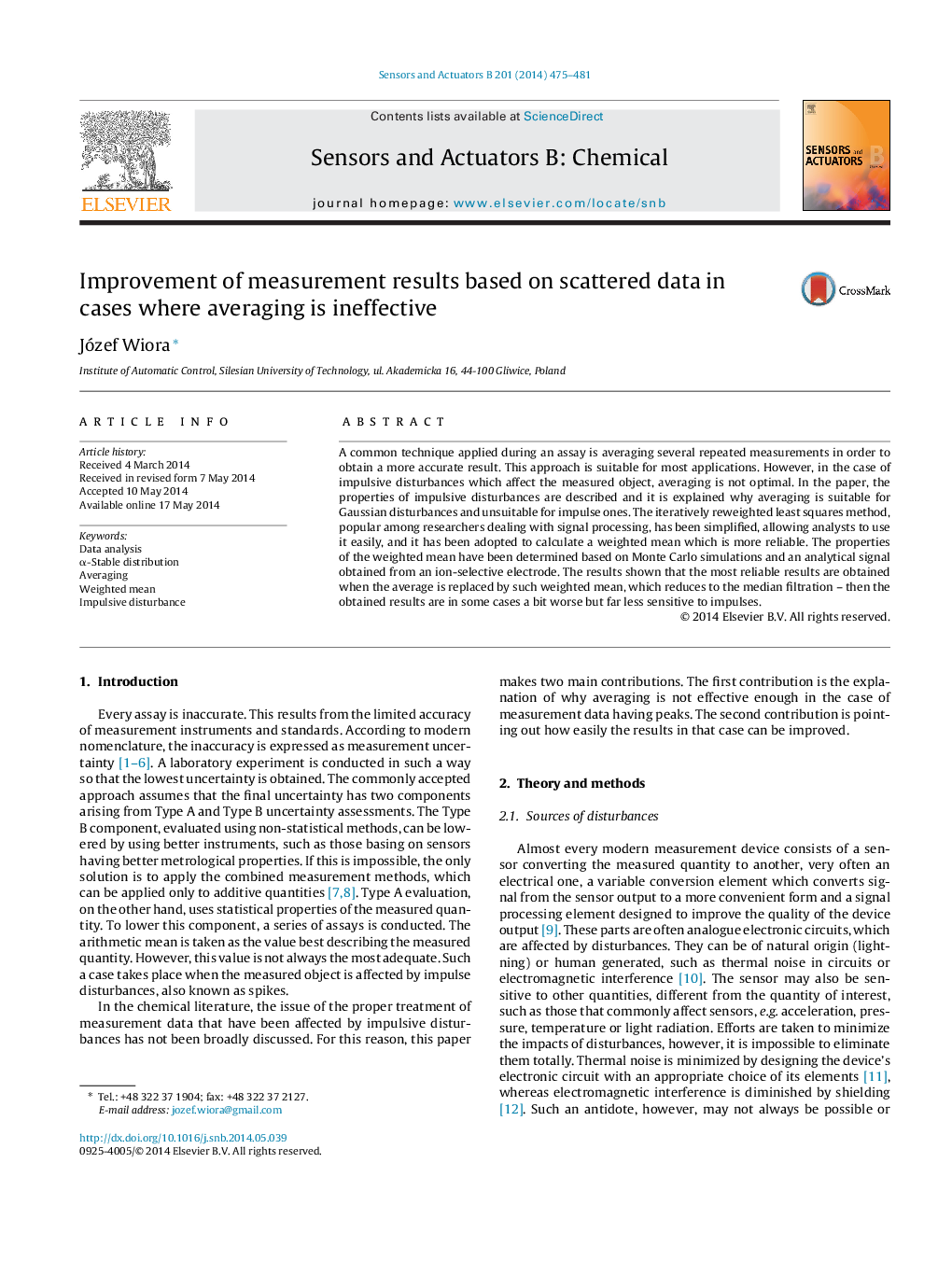| Article ID | Journal | Published Year | Pages | File Type |
|---|---|---|---|---|
| 7146882 | Sensors and Actuators B: Chemical | 2014 | 7 Pages |
Abstract
A common technique applied during an assay is averaging several repeated measurements in order to obtain a more accurate result. This approach is suitable for most applications. However, in the case of impulsive disturbances which affect the measured object, averaging is not optimal. In the paper, the properties of impulsive disturbances are described and it is explained why averaging is suitable for Gaussian disturbances and unsuitable for impulse ones. The iteratively reweighted least squares method, popular among researchers dealing with signal processing, has been simplified, allowing analysts to use it easily, and it has been adopted to calculate a weighted mean which is more reliable. The properties of the weighted mean have been determined based on Monte Carlo simulations and an analytical signal obtained from an ion-selective electrode. The results shown that the most reliable results are obtained when the average is replaced by such weighted mean, which reduces to the median filtration - then the obtained results are in some cases a bit worse but far less sensitive to impulses.
Related Topics
Physical Sciences and Engineering
Chemistry
Analytical Chemistry
Authors
Józef Wiora,
